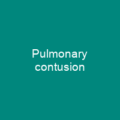Understanding the Circulatory System: A Vital Network
The circulatory system is a complex network that keeps our body alive, much like how water flows through a vast irrigation system in a farm. It consists of organs such as the heart and blood vessels, working together to transport oxygen, nutrients, and waste materials throughout the body. This intricate system can be divided into two main parts: systemic circulation and pulmonary circulation.
The Heart: The Pump at the Core
The heart is the powerhouse that keeps this network running smoothly. It has four chambers – two atria and two ventricles – with each side having a specific function. The left side pumps oxygenated blood to the body, while the right side sends deoxygenated blood to the lungs for re-oxygenation.
The Journey of Blood
When we delve into the journey of blood, it’s like following a river through its winding course. The systemic circulation starts with the left ventricle pumping oxygen-rich blood into the aorta, which then branches out to supply different parts of the body. As this blood travels through smaller arteries and arterioles, it eventually reaches capillaries where exchange occurs – nutrients are delivered, and waste is collected.
After passing through these tiny vessels, deoxygenated blood returns via venules and veins, converging into two major veins: the superior vena cava (draining upper body) and inferior vena cava (draining lower body). These large veins empty back into the right atrium of the heart, completing the cycle.
The Role of Blood Vessels
Arteries, veins, and capillaries form a network that ensures blood reaches every corner of the body. Arteries are like the main rivers, carrying oxygen-rich blood away from the heart. As they branch into arterioles and then capillaries, their walls become thinner and more permeable to facilitate exchange.
Capillaries, with their vast network in a 70 kg human estimated at between 9,000 and 19,000 km, are the smallest blood vessels. They merge into venules, which then form veins that return deoxygenated blood to the heart.
The Lymphatic System: A Complementary Network
While the circulatory system is closed and keeps blood within its network, the lymphatic system acts as an open subsystem. It removes excess fluid from tissues and returns it to circulation as lymph, helping maintain balance in the body.
The Development of Circulation: From Embryo to Adult
Developmentally speaking, the circulatory system starts with vasculogenesis during embryonic life. The arterial and venous systems develop from different areas – arteries from aortic arches and dorsal aortae, while veins form from vitelline veins, umbilical veins, and cardinal veins.
The Journey of Knowledge: From Ancient Times to Modern Discoveries
Understanding the circulatory system has been a long journey. Ancient civilizations like Egypt and India had insights into blood flow, but it was not until the 16th century that Michael Servetus described pulmonary circulation in his book Christianismi Restitutio. William Harvey’s experiments in 1628 confirmed the existence of a direct connection between venous and arterial systems.
Ibn al-Nafis, a physician from the Islamic Golden Age, provided accurate details on pulmonary circulation. His work was later refined by Marcello Malpighi, who discovered the capillary system connecting arteries and veins.
Cardiovascular Diseases: A Modern Challenge
The circulatory system is not immune to diseases. Cardiovascular disease (CVD) can affect anyone, often due to lifestyle choices like smoking or poor diet. CVD includes conditions such as acute coronary syndromes, aneurysms, and thrombosis.
Measuring the Health of Your Circulation
The health of your circulatory system is measured through various methods including pulse measurement, blood pressure checks, electrocardiograms (ECGs), and more invasive procedures like angiography. Surgical interventions include coronary artery bypass surgery and vascular surgery.
Evolutionary Insights: From Open to Closed Circulation
The circulatory system has evolved over millions of years. While humans have a closed blood circuit, some invertebrates use an open system with limited blood vessels. The earliest known writings on the subject date back to ancient Egypt and India.
From Plato to Ibn al-Nafis: A Timeline of Discoveries
Theories about circulation evolved from Plato’s element-based rules to Galen’s theory in 2nd-century Rome, which was later refined by Avicenna. Ibn al-Nafis provided accurate details on pulmonary circulation and predicted the capillary system.
Conclusion: The Circulatory System – A Lifeline
The circulatory system is a marvel of nature, ensuring that every cell in our body receives what it needs to function properly. From ancient civilizations to modern medical breakthroughs, understanding this vital network has been a continuous journey. By maintaining healthy habits and regular check-ups, we can ensure the smooth operation of this complex yet essential system.

You want to know more about Circulatory system?
This page is based on the article Circulatory system published in Wikipedia (retrieved on February 3, 2025) and was automatically summarized using artificial intelligence.







